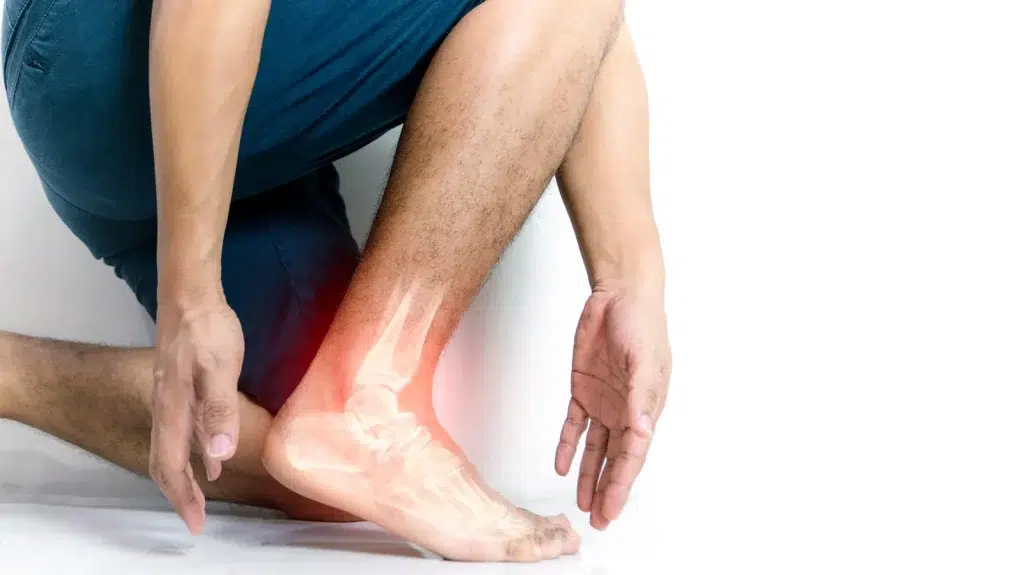Recurrent Ankle Giving Way After Repeated Sprains
What Is Chronic Ankle Instability?
Chronic ankle instability is a condition where the outer (lateral) side of the ankle frequently “gives out” during activity, especially on uneven surfaces or during sports. It typically develops after multiple ankle sprains that were not fully healed or rehabilitated, leading to weakened ligaments and poor ankle control.
Over time, the ligaments lose their ability to support the ankle properly, resulting in a cycle of repeated injuries and instability.
Causes and Risk Factors
- History of repeated lateral ankle sprains
- Inadequate rehabilitation after a prior ankle injury
- Ligament laxity (loose ligaments)
- Poor proprioception (balance and joint awareness)
- High-impact or pivot-heavy sports (e.g., basketball, soccer, trail running)
Symptoms
- Frequent episodes of the ankle “giving out,” especially during movement
- Persistent discomfort or tenderness around the ankle
- Swelling, even in the absence of a recent injury
- Feeling of looseness or instability in the joint
- Difficulty walking on uneven surfaces or wearing certain shoes
- Reduced performance in sports or physical activity
Diagnosis
Evaluation includes a thorough physical exam and detailed history of prior ankle injuries. The orthopedic specialist may perform manual stress tests to assess ligament integrity.
Imaging Tests:
- X-rays: To rule out fractures or bone alignment issues
- MRI: To visualize ligament damage, scar tissue, and cartilage injuries
- Stress X-rays: To assess the looseness of ankle ligaments under force
Treatment
Non-Surgical Treatment
- Physical Therapy: Focuses on strengthening the surrounding muscles and restoring balance and proprioception
- Bracing or Taping: Helps support the ankle during activity
- Activity Modification: Avoiding high-risk movements or surfaces
- Anti-inflammatory medications: To manage pain and swelling during flare-ups
Surgical Treatment
- Surgery is considered if non-surgical options fail and instability continues to interfere with daily life or athletic performance. The most common procedures include:
- Broström Procedure: A ligament repair or reconstruction technique using the patient’s own tissue
- Ligament Reconstruction with Tendon Graft: Used in more severe cases or when native ligaments are too damaged
Recovery Timeline
- Non-surgical rehab: May take 6–8 weeks of consistent physical therapy
- Surgical recovery: 4–6 weeks in a cast or boot followed by physical therapy
- Return to full activity or sports: Typically between 3–6 months depending on progress
Expert Treatment at Kerlan Jobe Institute
At Kerlan Jobe Institute, our orthopedic foot and ankle specialists provide personalized care for chronic ankle instability. We emphasize precise diagnosis, evidence-based rehabilitation, and, when necessary, advanced surgical repair to help patients restore ankle strength, stability, and confidence in motion.

